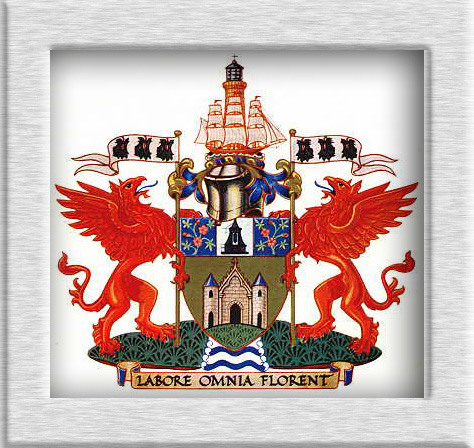

|
|
|
Eccles Cross.
Eccles Cross is another indication of the area's distant past. The original cross was erected by Celtic missionaries in the 5th century. The stump of the later Saxon cross stood neglected for years, until accidentally demolished by a lorry in the Second World War. Its location was next to the present cross, near the junction of Regent Street and Church Road and it has been cleaned and the area re-planted. |
|
|
James Nasmyth.
James Nasmyth was born in Edinburgh in 1808. From an early age James showed an interest and a talent for things mechanical and as a youth he was taken on as an apprentice by Henry Mawdsley, one of the leading engineers of the day. It was on a walking tour to view the Liverpool-Manchester Railway, then recently opened, that James noticed the site at Patricroft, then a borough of Eccles, that was to become the site for his foundry. His inventions and improvements to machinery were many, the steamhammer being the best-known. He also designed a safety device that prevented accidents in moving molten metal. He did not take out a patent on this so that it could be copied without charge. He also took a keen interest in art, astronomy and local government. He became Chairman of the Local Board of Health in 1854. At the age of 48 he retired to Kent where he devoted his time to his interests. He died in 1890, having become a key figure in the history of engineering. |

William Huskisson.
Eccles' other claim to fame is its involvement in one of the world's first railway accidents at the opening ceremony of the Manchester to Liverpool railway, when in 1830 William Huskisson, the Member of Parliament for Liverpool, was seriously injured by an approaching locomotive. He was taken to the vicarage in Eccles for treatment, but died of his injuries. Below is a report of the accident at the time.

SEPTEMBER 15th On this day in history in 1830 died William Huskisson. |
|
Eccles Wakes.
Eccles Wakes were held over three days, beginning on the first Sunday after 25th August. This is the feast day of St. Mary, to whom the Parish Church is dedicated. The Wakes are said to have had their origins in the ancient custom of rush bearing. People would bring cartloads of rushes to spread over the church floor. The carts and the people themselves would dress up for the ocassion and celebrate with music and dance. By the 19th Century the Wakes had become a somewhat less than pious affair. Races and competitions were held as well as blood sports. These included bull and bear-baiting and cock fighting. In the illustration above we see a ladies race for a smock. The scene shows the riotous nature of this kind of event. Although many came to Eccles to enjoy the general rowdiness and excess, many locals objected to the gross behaviour and to the cruel sports. In 1877 the Home Secretary, at the request of the Eccles Local Board, banned the Wakes. |